《1 Introduction》
1 Introduction
Transportation is key to China’s national economic lifeline and security. China has a vast territory and is rich in renewable resources such as wind and solar energy [1]; therefore, its potential for utilizing land transportation infrastructure assets to provide energies is significant [2]. The development and utilization forms, modes, and system solutions are feasible and promising [3], providing strategic choices to alleviate the energy problems of China’s transportation system [4].
The current global consensus in coping with climate change is to take full advantage of wind, solar, and other renewable or low-carbon energy sources, which includes their application in the transportation sector. In addition, each developed country is exploring its own unique ways to transform transportation in accordance with its own conditions and natural resources. Based on the distribution of wind-energy resources, China can be divided into four areas: extremely rich, rich, general, and poor areas [5]. Wind energy can be easily utilized to provide electricity for monitoring, lighting, toll-collection systems, and supporting facilities in road transportation. The prospects for the integration of wind energy with road traffic are promising [6]. Based on the degree of abundance, solar energy resource distribution in China can be divided into four areas: extremely abundant, very abundant, abundant, and general areas [7]. Road infrastructure integration with new energy technology has attracted the attention of researchers from different disciplines; in particular, the integration of wind and solar energies with road transportation has been actively studied [8–10]. In recent years, road vehicles using clean-energy technologies have developed rapidly [11]. In addition to the widespread electrification of vehicles, hydrogen also shows great potential as an energy source. The integrated development of wind and solar energy utilized by facilities as well as the integrated development of hydrogen production, storage, and utilization have become instrumental to road transportation and energy integration [12].
As mentioned above, the research and development (R&D), implementation, verification, and integration of wind and solar technology for road-transportation energy already exist [13,14]. However, there is still a giant gap in the development and integration of clean, self-consistent energy on an industrial scale. By reviewing the history, analyzing the current status, and assessing the development needs and trends of road transportation and renewable-energy integration, a pathway for the integrated development of road transportation and energy in China is proposed in this paper. In addition, by consulting the related policy recommendations, we provide constructive suggestions for government decision-making, enterprise technology R&D, and industrial applications and a reference for the integration of energy and road transportation based on China’s natural resources.
《2 History and current status of road-transportation–energy integration》
2 History and current status of road-transportation–energy integration
From the perspective of the power-drive system, road transportation has evolved through five stages: animal power, steam, internal combustion, electrification, and the emerging hybrid drive.
《2.1 Development of road vehicles driven by animal power (agricultural civilization era)》
2.1 Development of road vehicles driven by animal power (agricultural civilization era)
As early as the Paleolithic Age, humans mastered the skill of making fire, which is considered to be the first energy-conversion technology. However, in early agricultural civilizations, transportation mainly consisted of ox and horse carts and other means of transportation powered by cattle, horses, and other livestock. During this period, the transportation capacity and spatial displacement range of human activities were mainly constrained by objective conditions such as the livestock’s physical ability and strength, which led to significant restrictions in the scope of potential activities, the number of people who benefitted from them, and their popularity.
《2.2 Development of steam-driven road vehicles (First Industrial Revolution)》
2.2 Development of steam-driven road vehicles (First Industrial Revolution)
With the advent of the steam engine during the First Industrial Revolution in the early 19th century, technology greatly progressed, and steam-driven locomotives were developed. Coal replaced manpower and animal power as the main power source for vehicles. These new operation modes were much more efficient and significantly facilitated the travel of human beings in terms of both distance and capacity.
《2.3 Development of road vehicles driven by internal combustion (Second industrial Revolution)》
2.3 Development of road vehicles driven by internal combustion (Second industrial Revolution)
The invention of the internal combustion engine in the mid-19th century paved the way for the subsequent development of internal-combustion vehicles such as cars, trucks, and large buses. Fossil fuels gradually replaced coal as the main energy source of vehicles. Because the efficiency of the internal combustion engine was much higher than that of the steam engine, road vehicles were significantly more advanced than the earlier steam locomotives. The convenience of the fuel-injection process allowed internal-combustion-driven vehicles to dominate the road-transportation industry for over a century after the inception of the technology, which not only promoted the Industrial Revolution but also the development of human civilization.
《2.4 Development of electric vehicles (late 19th century to present)》
2.4 Development of electric vehicles (late 19th century to present)
Electric vehicles were first invented in the late 19th century; however, because of their drawbacks, including high cost, short range, and recharging difficulty, their use was soon surpassed by the rapid development of the internal combustion engine. After the international oil crisis in the 1970s, most countries worldwide realized that oil, as a non-renewable fossil fuel, was destined to be replaced by renewable energy sources in the future. Thus, the world’s major industrialized countries launched electric vehicle R&D programs and industrial development plans one after another. Today, many common factors such as global warming, the fossil energy crisis, and environmental sustainability have further strengthened efforts to develop electric vehicles.
《2.5. Development of future road vehicles with hybrid drives》
2.5. Development of future road vehicles with hybrid drives
In the past two decades of the 21st century, countries worldwide issued their own development plans for the automobile industry. Developed countries and regions such as the United States, European Union, and Japan successively launched a series of industrial technology development plans to implement mixed-drive vehicles as well as hydrogen-powered, pure electric, hybrid electric, and high-efficiency internal-combustion-engine vehicles. In accordance with the criteria and resources on a national scale, China has continuously supported the scientific and technological R&D of pure electric, fuel-cell, and internal-combustion lightweight vehicles, among others, through national key R&D projects. These efforts have yielded a relatively complete inventory of more sustainably driven vehicles for the country. The emphasis on many crucial factors, such as natural resources, national energy security, environmental issues, and sustainable development, ensures that mixed-drive multi-technological vehicles will continue to be developed in the future.
《3 Development needs and trends of road-transportation–energy integration》
3 Development needs and trends of road-transportation–energy integration
By the end of 2020, the existing road mileage in China reached 5.2 × 106 km [15] and the number of cars reached 300 million [16]. The total energy consumption of the road transportation system is large, especially vehicular fuel consumption. The annual increase in oil imports has increasingly affected China’s energy security and ultimately its national security. Therefore, addressing the energy demand for such a large-scale system has become the key to ensuring China’s national security and achieving carbon peaking and neutrality.
《3.1 Self-sustaining energy supply in road transportation systems and national energy security》
3.1 Self-sustaining energy supply in road transportation systems and national energy security
As is well-known, China’s primary fossil-energy source is coal, and gas and oil supplies are insufficient. Therefore, China’s transportation-system energy, especially vehicular oil consumption, mainly depends on imports; as of 2020, China’s annual imports of crude oil accounted for up to 70% of total crude oil used, and road vehicles, including cars and heavy trucks, accounted for over 77% of the energy consumption of all modes of transportation. The majority of imported oil is used to meet the energy needs of vehicles [17]. Such a high energy-import dependence not only significantly depletes national wealth but also deeply affects China’s international geopolitics, international trade, national unity, and many other aspects. Therefore, to realize a more sustainable energy structure and meet the growing energy demand of China’s road transportation system, fully utilizing wind and solar energies within the transportation infrastructure, as well as providing clean, self-consistent electricity and hydrogen energy has emerged as the chosen strategy to guarantee national energy security.
《3.2 Changing trend of vehicle power forms resulting from a green energy structure》
3.2 Changing trend of vehicle power forms resulting from a green energy structure
Since the 1980s, China has been actively exploring and vigorously developing non-hydro renewable energy sources, mainly wind and solar, which has led to the country being ranked first in the world in terms of installed renewable energy capacity. China’s proportion of green energy has also been increasing annually [18]. To achieve the goals of carbon peaking and carbon neutrality, the proportion of wind and solar energy, as well as that of other clean energy technologies, need to continue to expand, gradually changing the primary energy structure in China. In response to this evolution, vehicles must also be adapted to run on these energy sources, which will lead to increased electrification and hydrogenization and finally to low carbon or net-zero emissions, helping to realize carbon neutrality in road transportation.
《3.3 Change in transportation energy system forms caused by a natural resources utilization evolution》
3.3 Change in transportation energy system forms caused by a natural resources utilization evolution
The domain covered by China’s road transportation network contains abundant natural resources in the form of wind and solar energy [2], which can be economically and efficiently transformed into secondary energy sources such as electrical or hydrogen energy. These secondary sources can be developed, stored, transmitted, and utilized in real applications. Many exemplary projects have been carried out to test and verify energy utilization within transportation infrastructure assets such as stations, service areas, and road hubs, and promising results have been obtained. Owing to the clear support of national policies promoting photovoltaics, transportation, and other industries [19], as well as the pressure of the transportation industry itself to achieve low-carbon development, the transportation sector must adapt to this change in energy supply structure in order to achieve carbon peaking and neutrality in the entire lifecycle of the transportation system. Therefore, the future energy-utilization mode of the road transportation system, especially vehicles, will change from fossil fuels to green secondary energy sources, such as electricity and hydrogen energy.
《3.4 Change in transportation-energy utilization caused by the urgent energy demand of intelligent transportation system development》
3.4 Change in transportation-energy utilization caused by the urgent energy demand of intelligent transportation system development
The continuous innovation and rapid development of intelligent transportation systems are facilitating the construction of safer, more efficient, greener, and more convenient alternatives to the existing technology [20]. However, with the intelligent development of the transportation industry, the energy demand from emerging software and hardware systems such as the Internet of Vehicles, 5G technology, and intelligent operation and maintenance is also considerably increasing. The large-scale deployment of transportation infrastructure presents a linear- or mesh-distributed energy demand when coupled with the road network, which poses new challenges to the traditional power-grid-intensive power supply. In particular, in the vast area to the northwest of the famous “Hu Huanyong Line,” no power grid or only a very weak power grid exists. Therefore, determining how to use the road-transportation system’s own service area, roadside slopes, field stations, and other features to develop the wind- or solar-energy potential of the infrastructure assets to achieve a self-sustaining supply of clean energy will help alleviate the growing energy demand from the intelligent development of the transportation system [3]. The two independently developed systems—energy technology and road transportation—will gradually synergize toward achieving a clean, low-carbon, integrated, and efficient self-sustaining transportation-energy system. Inevitably, this transformation will also catalyze sustainable economic and social development as well as support the goal of carbon peaking and neutrality [21].
《4 Feasibility of integrating road transportation and energy in China》
4 Feasibility of integrating road transportation and energy in China
To analyze the feasibility of a self-sustaining energy supply in the road-transportation system and its carbon-emissions-reduction prospects, we employed a typical energy-consumption calculation based on the existing wind, solar, and natural resources. This allowed us to propose a strategy for transportation and renewable-energy integration.
《4.1 Assessment of self-sustaining energy development of expressways in China》
4.1 Assessment of self-sustaining energy development of expressways in China
In this study, the natural resources of wind and sun were applied to China’s expressway infrastructure to demonstrate the self-sustaining energy development potential of the road-transportation system. Figs. 1 and 2 show the proposed evaluation process [1,2,22], and the relevant results were obtained using public data [23].
《Fig. 1》
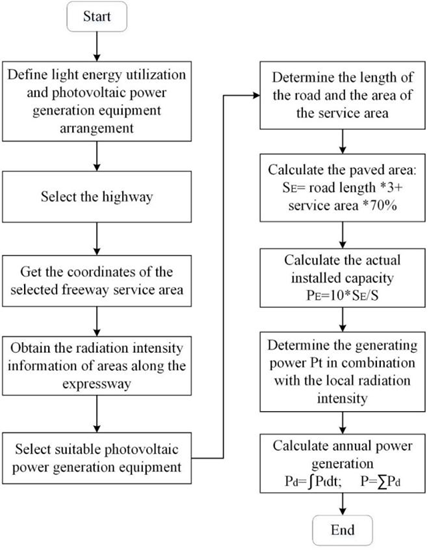
Fig. 1. Calculation process for determining the solar-power potential of an expressway.
《Fig. 2》
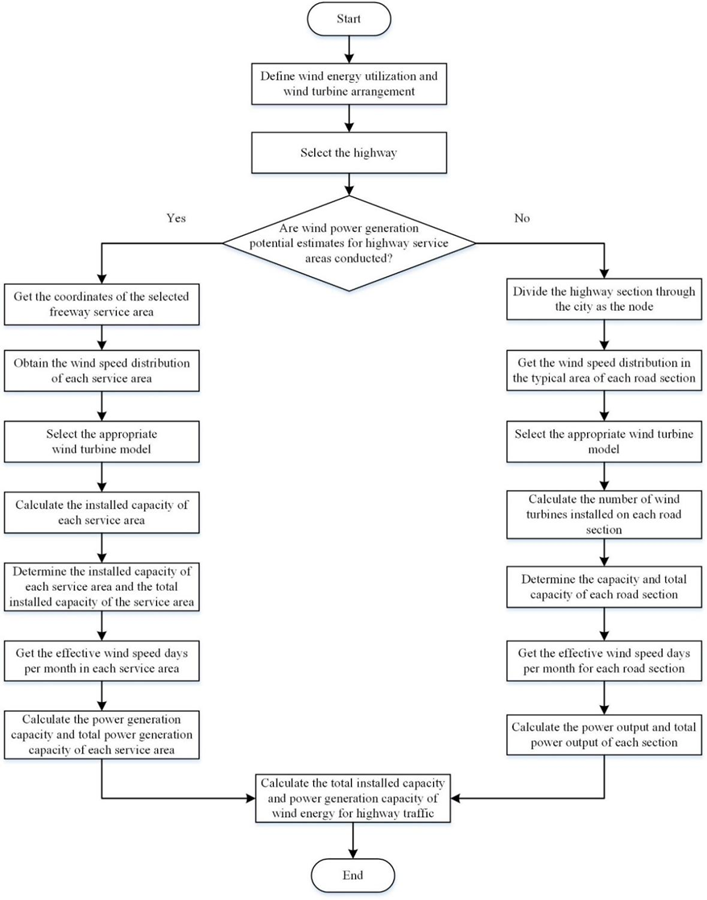
Fig. 2. Calculation process for determining the wind-power potential of an expressway using its own assets.
4.1.1 Potential of wind energy
Assuming that the total output efficiency of wind energy converted into electrical energy through electromechanical equipment is 30%, the installed capacity of wind power in an optimistic scenario of China’s expressway system is approximately 5.7 × 1010 kW, and the average annual power generation is approximately 3.6 × 1012 kW·h. In a general scenario, the installed capacity of wind power is approximately 2.25 × 1010 kW, and the average annual power generation is approximately 1.6 × 1012 kW·h [23]. Therefore, the potential for wind-energy development is considerable.
4.1.2 Potential of solar energy
Assuming that the total output efficiency of solar energy converted into electrical energy by photovoltaic equipment is 30%, the installed capacity of solar power in an optimistic scenario of China’s expressway system is approximately 1.0 × 108 kW, and the average annual power generation is approximately 1.937 × 1011 kW·h. In a general scenario, the installed capacity of solar power is approximately 1.3 × 107 kW, and the average annual power generation is approximately 2.52 × 1010 kW·h [2]. Similar to wind power, the development potential of solar energy is also significant.
In summary, there is a great potential for the existing infrastructure of China’s expressways to be harnessed to develop and utilize wind and solar energy.
《4.2 Energy-demand analysis of China’s expressway system》
4.2 Energy-demand analysis of China’s expressway system
This paper analyzes the energy consumption demands of expressway infrastructure and road vehicles. Figs. 3 and 4 present the processes of calculating the total energy consumed by China’s expressway infrastructure and road vehicles [24–27]. The results were calculated using publicly available data [23].
《Fig. 3》
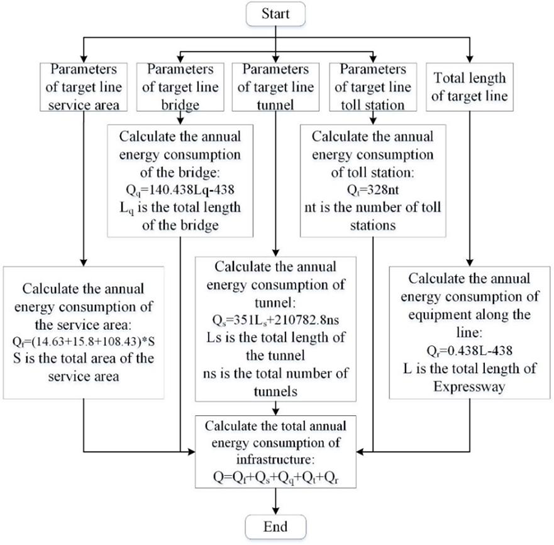
Fig. 3. Process of calculating the total energy consumed by China’s expressway infrastructure.
《Fig. 4》
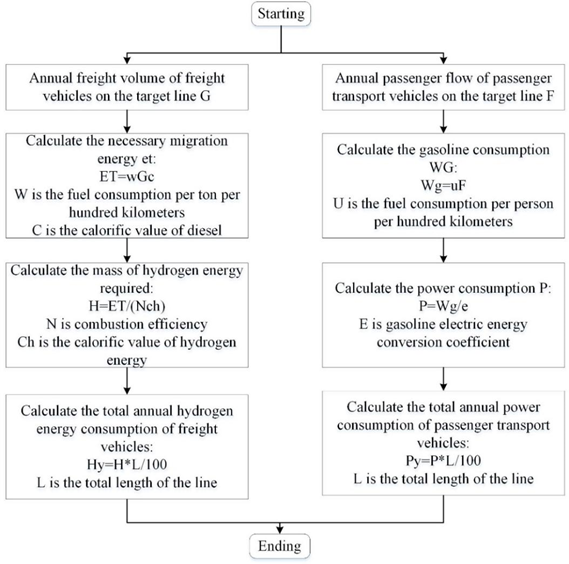
Fig. 4. Process of calculating the total energy consumed by road vehicles in China’s expressway system.
4.2.1 Energy consumption of road-transportation infrastructure
Road-transportation infrastructure includes service areas, tunnels, bridges, toll stations, and facilities along the road lines. According to public data, the average annual energy consumed by these infrastructure assets is as follows: road-transportation service areas, ~5.36 × 109 kW·h; tunnels, ~1.067 × 1010 kW·h; bridges, ~9.31 × 109 kW· h; toll stations, ~4.45 × 105 kW·h; and facilities along the road lines, ~2.276 × 106 kW·h. Therefore, according to the proportion of expressways to the total road-transportation mileage, the total average annual energy consumption of the entire road-transportation system’s infrastructure is ~2.535 × 1010 kW·h, and the average annual energy consumption of the expressway infrastructure can be estimated as ~1.799 × 1010 kW·h.
4.2.2 Energy consumption of road vehicles
Using the proportion of various vehicle models given in the National Statistical Yearbook and the national annual total passenger turnover, we can obtain the per capita fuel consumption per 100 km of different vehicle models. Then, the fuel consumption of the internal combustion engine under the same transportation mileage can be converted into standard coal and then further converted into electric-power consumption by electric vehicles with the same transportation mileage. Finally, we can obtain the total power-consumption of national road vehicles after performing the entire calculation process [23]. The results show that the average annual power consumption of road vehicles in China is ~2.9 × 1012 kW·h.
《4.3 Analysis of the self-sustainability of the energy supply and carbon emissions of the expressway network》
4.3 Analysis of the self-sustainability of the energy supply and carbon emissions of the expressway network
The above calculation results show that for the road transportation system, the energy consumption of road vehicles is much greater than that of the transportation infrastructure. Therefore, for achieving carbon peaking and neutrality for the entire road-transportation system, it is important to optimize the penetration proportion of the total self-sustaining energy consumed by the road vehicles with respect to that of the total road-transportation system. Based on the availability of natural resources along China’s expressway network and the calculated energy consumed by the expressway network, we can estimate the self-sustainability rate of the clean energy supply for the expressway network in China and the corresponding carbon-emissions reduction [23].
4.3.1 Energy self-sustainability analysis of expressway network in China
By using the traffic-system self-sustainability rate measurement model as well as considering the solar energy development potential and energy consumption of the transportation infrastructure, it can be estimated that China’s expressway network can achieve up to 132% self-sustaining solar energy in the best-case scenario, without considering the energy consumption of the carrier equipment. Under the general scenario, this proportion decreases to 56% [2].
In the total-energy-consumption scenario, accounting for both road-transportation infrastructure and traffic equipment, the total self-sustainability rate of the clean-energy supply in the general scenario of China’s expressway network can reach 72.8%, and the new energy penetration rate can reach 75.2% when wind and solar energy are utilized simultaneously [23].
4.3.2 Carbon-emissions reduction of expressway network in China
From the above information, it can be estimated that under the general scenario, the average annual carbon-emissions reduction of the expressway network in China can reach 1.31 × 108 t, and the average annual biological carbon absorption can reach 2.5 × 107 t [23].
Therefore, based on the calculated self-sustaining energy-supply rate and reduction in carbon emissions, the expressway network in China has great potential to become greener.
《5 Development path for the integration of road transportation and energy in China》
5 Development path for the integration of road transportation and energy in China
《5.1 Development mode for the integration of road-transportation and energy》
5.1 Development mode for the integration of road-transportation and energy
5.1.1 Energization of infrastructure assets for the integration of road transportation and energy in China
As discussed in the previous sections, there is great potential for renewable energy utilization by harnessing the existing infrastructure assets. Under this mode, the energy self-sustainability rate of the transportation system and the carbon-emissions reduction prospects are very broad. Therefore, the main strategy for integrating road transportation with energy is to access the available wind and solar power within the road-traffic infrastructure, providing a distributed self-sustaining energy supply with near-zero emissions.
5.1.2 Self-sustainability as the main development target for the integration of road transportation and energy
Toward the goals of carbon peak and neutrality, national energy security should be considered, as well as factors such as road-traffic intelligence and green-energy utilization. In planning, designing, and carrying out the self-sustaining integration of renewable energy for the road-transportation system, the ultimate target is the eventual construction of a distributed source–grid–load–storage–charging system for road vehicles.
5.1.3 Scenario-driven development mode for the integration of road transportation and energy
In China, several factors may help to topologically construct application scenarios for the integration of road transportation with energy, such as meteorological characteristics, economic and population characteristics, and the three different types of terrain in China’s topography. The total geographic space can be divided into 12 transportation and energy integration scenarios considering the real application requirements of the power-grid distribution backbone and traffic-load demand distribution [23]. These scenarios are shown in Fig. 5, and the details of the corresponding geographic areas are listed in Table 1.
《Fig. 5》
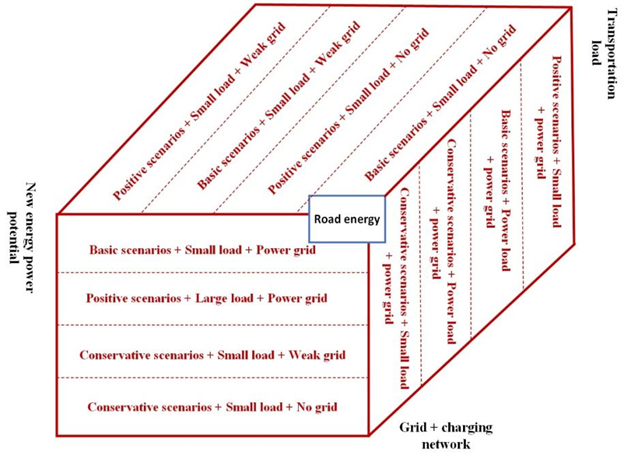
Fig. 5. Twelve scenarios for integrating road traffic with energy in China.
《Table 1》
Table 1. Division of the 12 scenarios of China’s road traffic and energy integration.
| Scenario | Suitable Modes | Applicable Regions |
| 1 | Abundant + Small load + Weak network | Xinjiang region |
| 2 | General + Small load + Weak network | Tarim Basin, Jilin, Liaoning, and Hainan |
| 3 | Abundant + Small Load + No network | Tibet region (except southeast) and northeastern Inner Mongolia |
| 4 | General + Small load + No network | Northeastern Heilongjiang and southeastern Tibet |
| 5 | Abundant + Small load + Strong network | Central and western Inner Mongolia, Qinghai, Ningxia, northern Gansu, and northern Yunnan |
| 6 | General + Heavy load + Strong network | Beijing–Tianjin–Hebei region |
| 7 | Scarce + Heavy load + Strong network | East China and South China |
| 8 | Scarce + Small load + Strong network | Central China, Chongqing, and Guizhou |
| 9 | General + Small load + Strong network | Southern Gansu and southern Yunnan |
| 10 | Abundant + Heavy load + Strong network | East and central regions of North China |
| 11 | Scarce + Small load + Weak network | Junction of Shaanxi and Sichuan |
| 12 | Scarce + Small load + No network | Western Sichuan |
The application scenarios are divided according to the three major terrains in China and are linked to the goal of carbon peaking and neutrality. The integration process of energy and transportation can be planned according to the amount and proportion of carbon-emissions reduction in each region. Carbon-emissions reduction is mainly considered from three perspectives: electricity substitution and emissions reduction, biological carbon absorption, and economic carbon integration. The priority level of development is determined by simultaneously considering the self-sustainability rate and penetration rate index of each region.
The three terrain ladders are precisely matched with the 12 independent application scenarios, which are superimposed over the three networks, that is, the renewable energy/resource network, power grid EV charging network, and road-transportation load network. Among the 12 scenarios, the first ladder corresponds to scenarios 1, 3, 4, 5, and 12, where scenarios 3 and 4 are typical examples; the second ladder corresponds to scenarios 1, 2, 3, 5, 6, 8, 9, 10, 11, and 12, where 1, 2, 5, 8, 9, 10, 11, and 12 are typical representatives; and the third ladder corresponds to scenarios 2, 3, 4, 6, 7, 8, and 10, where scenarios 2, 3, 4, 6, and 7 are typical representatives. By grouping these 12 scenarios by their natural resource, power grid, and road-transportation load attributes, four specific modes of road-transportation-energy construction schemes can be proposed, namely, energy systems dedicated for transportation, transportation-specific energy systems, energy systems suitable for transportation, and energy-supported transportation systems [3]. The mapping relationship between these modes, interaction between transportation and energy, and 12 application scenarios of transportation and energy integration are shown in Fig. 6.
《Fig. 6》

Fig. 6. Scheme showing the divisions of the different application scenarios.
《5.2 Comprehensive evaluation of the effect of road traffic and energy integration for different scenarios》
5.2 Comprehensive evaluation of the effect of road traffic and energy integration for different scenarios
The 12 scenarios and modes representing the integrated development of road transportation and clean energy in the entire territory of China were analyzed and estimated considering the relations between road traffic and natural resource endowments, as well as the interaction among the three networks (i.e., the transportation, energy, and information networks). All 12 scenarios were applied to calculate the renewable-energy self-sustainability rate, penetration rate of renewable energy development and utilization, carbon-emissions reduction owing to green power substitution, biological carbon sequestration after environmental restoration, local carbon-emissions quota, and comprehensive economic benefits. The results are shown in Fig. 7. It can be seen that owing to the differences in natural resource availability and the supporting conditions of the existing energy network (mainly the power grid), each scenario presents promising and distinctive development and utilization prospects.
《5.3 Roadmap for the integrated development of road transportation and energy in China》
5.3 Roadmap for the integrated development of road transportation and energy in China
Fig. 7 indicates that by comprehensively considering the factors within the renewable energy and transportation integration system, including the self-sustainability rate, penetration rate, return of investment, and carbon-emissions reduction of road traffic, the areas corresponding to scenarios 1 and 5 should be the highest priority for development. Next, the areas corresponding to scenarios 2, 3, 4, 6, 7, 8, 9, and 10 should be considered. Finally, the areas corresponding to scenarios 11 and 12 have a lower priority and can be developed in the future. The renewable-energy-harnessing potential of the existing transportation infrastructure assets can be developed according to this prioritization scheme. Finally, a general roadmap for the integrated development of road transportation and energy in China can be constructed, as shown in Fig. 8.
《Fig. 7》

Fig. 7. Carbon-emissions reductions, economic benefits, and transportation attributes corresponding to the 12 transportation–energy integration scenarios in China.
《Fig. 8》
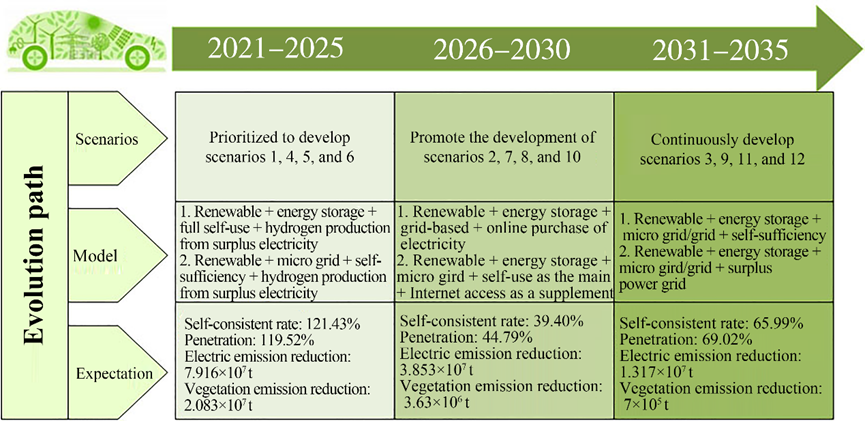
Fig. 8. Roadmap for the development of road traffic and energy integration in China.
《6 Policy recommendations》
6 Policy recommendations
《6.1 Technological innovation suggestions》
6.1 Technological innovation suggestions
6.1.1 Strengthening the R&D of energy/transportation integration technologies to promote the development of the entire industry chain
It is necessary to exploit the advantages of relevant institutions with transportation and energy disciplines, such as the Chinese Academy of Sciences and Chinese Academy of Engineering, national ministries and commissions, various transportation and energy planning and design institutes affiliated with central enterprises, the Ministry of Education, and the think tanks of key industry institutions. The national science and technology R&D system should be adopted to promote self-sustainable energy-system planning and design technology as a high-efficiency, flexible, and economical alternative to the existing system. This includes systematic equipment development and engineering application verification, optimization, and integration into the road-transportation system as well as its planning, construction, operation, maintenance, and management. Key technologies involved in integrating road-transportation equipment with clean energy should be developed. Industrial and security chains that jointly promote the large-scale integration of road transportation with energy should be built.
6.1.2 Promoting technological innovation of road transportation and energy integration to facilitate interdisciplinary collaboration
The key role of science and technology innovation should be exploited, and the R&D of new technologies, equipment, and materials involved in road transportation and energy integration should be strengthened. Technological breakthroughs are required in this field. The interdisciplinary innovation and development of the energy and transportation industries should be focused on. Innovative achievements should be encouraged regarding the self-sustaining microgrid, flexible direct-current power transmission, high-capacity composite energy storage, efficient use of renewable and hydrogen energy, physical fusion of transportation energy and information, artificial intelligence, and big data applications.
《6.2 Policy recommendations》
6.2 Policy recommendations
6.2.1 Improving the top-level design to strengthen the overall development plan for integrating road transportation and energy
The leading role of national science and technology planning and industry development plans should be emphasized to deepen the research on major strategic issues in the fields of transportation and energy. It is necessary to incorporate the integrated development of transportation and energy into the national R&D strategy and to popularize the concept. It is also necessary to study and improve the top-level design of the integrated development of transportation and energy, comprehensively describe the specific institutional advantages of China, and continue to be the global leader in the integrated development of transportation and energy.
6.2.2 Formulating supporting policies to forge a new operation mode of market-oriented road transportation and energy integration
It is imperative to give full play to the guiding role of policies, to take advantage of the national policy construction opportunities in promoting the transportation sector and establishing a national comprehensive three-dimensional transportation network, to formulate precise financial subsidy policies, and to encourage relevant enterprises or businesses to carry out pilot demonstrations. The decisive role of market mechanisms in transportation, energy, and the integration of the two should be exploited to guide all industries to invest in the integrated development of transportation and energy and to devise a strategy to integrate transportation and energy based on market operations.
6.2.3 Learn from international experience to build a cooperative platform for pan-international transportation and energy integration
It is necessary to promote the exchange of research on transportation and energy integration between the Chinese government and all relevant international organizations, as well as between domestic social groups, energy companies, scientific research institutions, colleges, and universities. China should accelerate the introduction of advanced technologies and incorporate successful international examples of transportation and energy integration and create a cross-border, cross-field, and cross-professional cooperative platform to promote and realize the integrated development of transportation and energy worldwide.
《Compliance with ethics guidelines》
Compliance with ethics guidelines
The authors declare that they have no conflict of interest or financial conflicts to disclose.














 京公网安备 11010502051620号
京公网安备 11010502051620号




